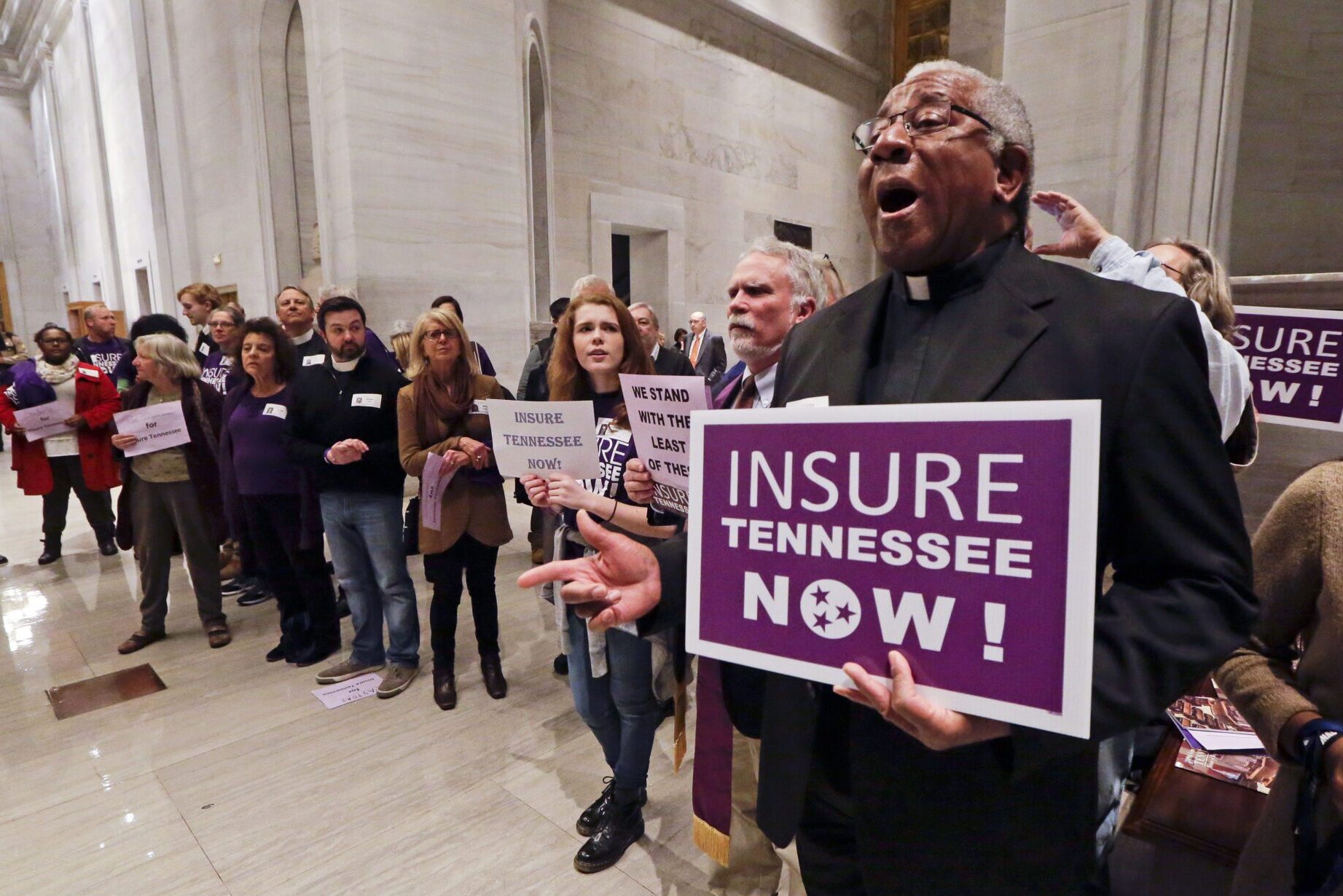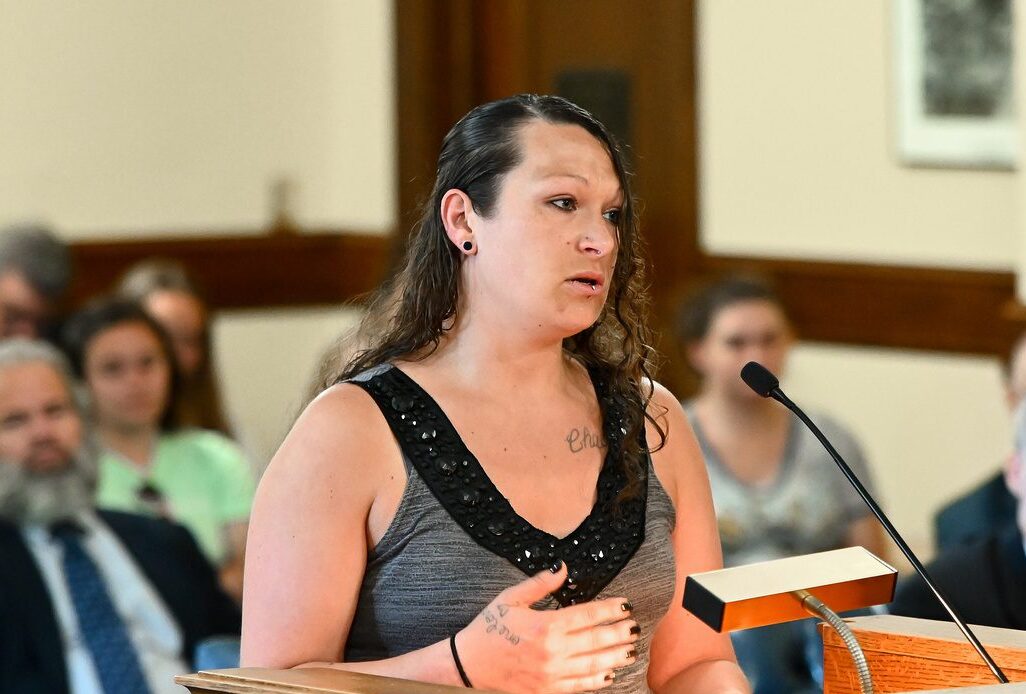“We Need to See the Bigger Picture”: How Cuts to Medicaid Hurt Public Safety
A new study found that when people lose health insurance, crime rates go up. Bolts spoke to one of the authors about the implications, at a time of a nationwide drop-off in Medicaid.
Alex Burness | April 8, 2024


When a state made cuts to Medicaid, depriving people of access to health insurance, the crime rate increased: That’s the finding of a new academic study, supported by the National Institutes of Health and released as a working paper in March by four scholars who study public health.
The study comes at a time when many states are ramping up punishment in response to crime, while leaving public services largely underfunded. One of the study’s authors, Catherine Maclean, a professor of public policy at George Mason University, tells Bolts that policymakers should keep in mind the critical value of a strong social safety net for stabilizing communities.
To study these relationships, Maclean and her coauthors examined crime rates in Tennessee before and after that state disenrolled some 200,000 people from Medicaid, with little warning, in 2005. That was and still remains one of the most sweeping state-level Medicaid drop-offs in U.S. history.
By 2007, the study finds, the crime rate in the median Tennessee county had increased by almost 17 percent, with large increases observed in both violent and non-violent crime; the study attributes this to the disenrollment through a series of causal analyses. “Losing Medicaid induced changes in economic standing, housing stability, healthcare use, and health, all of which are documented to be determinants of crime,” the authors write.
It stands to reason, Maclean said, that crimes inspired by desperation or behavioral health crises—or both—became more common in Tennessee post-2005, as poverty increased and people became more likely to delay needed health care. This was especially devastating for people who might have benefitted from mental health care or treatment for substance abuse disorder, the study found.
These patterns now risk repeating themselves at a large scale. Just last year, every state in the U.S. experienced a major contraction in Medicaid coverage, as the federal government ended an emergency pandemic policy that had kept millions enrolled in the program. States are still feeling the effects of that decision, as Bolts recently detailed.
A number of states are contemplating further Medicaid cuts, including Kentucky, Utah, and New York. Elsewhere, in Mississippi and South Dakota, voters have tried to force elected leaders to expand Medicaid via direct democracy, but with mixed success. And on the national stage, Donald Trump is running for president again, calling for dramatic slashing of public funds for health coverage.
Bolts spoke with Maclean about what the Tennessee study can tell us about the link between health insurance and public safety today; about what has and hasn’t changed since 2005; and about current proposed cuts to government-provided health insurance.
“You might save some dollars in terms of Medicaid, but that may lead to some other problems with other objectives, like promoting public safety,” she warned.
There’s plenty of existing research on how people become less likely to commit crimes after gaining health coverage. Your study notes there’s been much less research into what happens when people lose coverage. Why did you find that important to examine?
Over time, generally, Medicaid policy has led to expansion in coverage. But we’re now starting to see increasingly more talk and action about policy that could curtail it.
Some of these losses may come as more of a surprise. (Editor’s note: People who lose Medicaid coverage due to a change in rules, or a lapse in documentation, may not find out in a timely manner or with advance warning.) If you’re gaining Medicaid, it may be that you’ve taken steps—you’ve applied for Medicaid and you’ve shown documentation, so it’s not much of a surprise. If you just suddenly lose Medicaid, that can be very destructive in and of itself, and also for the inability to plan for what you’re going to do next.
Your study found that crime increased generally in Tennessee among those who’d lost health coverage, and that the increase in nonviolent crime was particularly clear. What does that tell us?
I think our findings pointed toward a financial resources story. That is, we found stronger, more stable effects for non-violent crime, which tend to be property crimes. The property crimes we looked at are burglary, theft, motor vehicle theft, and arson. The violent crimes we looked at were murder, manslaughter, rape, sexual assault, robbery, and assault. When we broke these crimes out, we see that our findings for non-violent crime were really driven by theft.
That, to me, suggested that some of these crimes we see might be financially motivated, which might be due to the loss of resources that one experiences when Medicaid is removed, or it could be increased need to finance medical bills.
What new information can we glean about health care and crime from looking at what happened 20 years ago in Tennessee?
The broader theme is thinking about the value of Medicaid. You can think about it as the value of the social safety net, providing support for people who don’t have much. It doesn’t just impact those people. It impacts society.
Even if we take a very restrictive view and we say that it’s each person’s responsibility to make a go of it themselves—finding jobs, getting insurance, staying out of quote-unquote trouble—there are implications for other people. So when you think about whether or not to provide a benefit to a particular segment of the population, I think we need to see the bigger picture: we’re all connected, we all live here together, and there are implications of policies targeting a particular group for the broader society.
We’re just focusing on crime here, but we can think about improvements in economic standing, the impact of [Medicaid] contraction on evictions. We need to look beyond just the individual, and more at society, when we’re considering the benefits of providing these social programs.
That would be my largest piece of advice: Don’t view any particular policy in isolation, because it’s very likely, given how complicated our world is, that that policy is going to spill over into other domains.
Today, many politicians who tend to oppose expanding social services, including government-covered health benefits, also tend to support “tough on crime” policies. Why do health access and public safety so often appear in conflict?
It does seem to me that there’s a strong correlation between policymakers and politicians being tough on crime while also taking a conservative view of the role of government in the provision of health insurance. People can certainly have different views about that role of government, but I sometimes suspect there is less [of] an understanding of the potential linkages between the two.
When you give people access to Medicaid, they generally have better financial outcomes.
You see increases in poverty when you curtail Medicaid, as was done in Tennessee. The idea is that health insurance, in addition to providing access to care, also protects people against the risk and cost of unexpected health care expenditures. You see increases in evictions as well. You can think of a whole range of outcomes that could be improved with the provision of health insurance. It seems like there are other means through which we could reduce reliance on the criminal justice system.
Just to say, alright, let’s hire some new police officers or let’s buy some new infrastructure for the police to use—it’s there, it can be seen, you can show your constituents what you’ve done. There’s something about being able to show your constituents that you did something.
Your study is timely, given the recent Medicaid contraction and the fact that several states right now are contemplating further serious cuts. New York’s governor, for instance, proposed slashing Medicaid by $1.2 billion at the same time she’s making a public show of her desire to fight crime, including by putting National Guard soldiers in Subway stations. How does your study inform these debates?
A policymaker’s job is a very hard one and I’m certainly cognizant of that, but I do think that points to an overlooked linkage: I think that as people lose access to coverage, as is going on through the unwinding, this can be quite destabilizing for individuals, and we think that could contribute to crime.
Medicaid is the largest purchaser of behavioral health care services in the country, so it plays a really important role of connecting people to services. I’m not trying to say that every crime is related to behavioral health, to substance use, because I don’t think that’s true, but I think it could be a bit short-sighted for policymakers not to consider those linkages.
The way these two things jibe together—being concerned about crime but also curtailing expenditures on a very valuable program, particularly for people with behavioral health conditions—I’d encourage people to think about what that might mean. You might save some dollars in terms of Medicaid, but that may lead to some other problems with other objectives, like promoting public safety.
Jails and prisons are often terribly unhealthy and even deadly places to be. To build off your study a bit: It seems that these so-called houses of correction and rehabilitation not only fail the people they’re holding, but—to the extent that health care access is a predictor of criminality—actively harm public safety when they release people in worse health conditions than when they arrived.
I certainly can’t disagree with that.
At various levels, be it people who are incarcerated, people who are not incarcerated, those goals—being “tough on crime” and taking a conservative view of the role of government in the provision of health care—can very often work against one another. The social determinants of health, or just health care access, can’t be forgotten if we’re going to try to improve outcomes. And I think a lot of these very punitive approaches have unintended negative consequences.
Overdose deaths have soared since 2005. What is your view of the importance of Medicaid to treat substance use disorder and ultimately to limit the number of people dying, and to limit the criminalization of drug use?
We are looking at a time period of the mid-2000s, which was the first wave of the opioid crisis. The second wave started in roughly 2010 and transitioned more toward heroin. We’re now in a third wave, at least, of the opioid crisis, where there’s been a substantial movement to synthetic opioids like fentanyl and analogs.
So what might that mean? Fentanyl is just substantially more harmful and easier to overdose on than prescription opioids in the 2000s, and I think that’s why we see this huge spike in opioid overdoses. At the same time, for a variety of reasons, we’re seeing more medications that can be used to treat opioid use disorder, we’re seeing what I’d say is a reduction in stigma around receiving treatment for substance use disorder. Medicaid in many states has increasingly played a larger role in providing that treatment, so my take is that, comparing the 2005 experiment to what we’re seeing now, Medicaid plays a larger role today in fighting the opioid crisis.
I do think understanding how cutting people off Medicaid is going to affect society—especially when we have these goals of enhancing public safety being talked about in so many localities across the country—I would just hope policymakers would consider that there are some things you can’t get back. You can of course reinstate Medicaid, but the negative implications of removing it will have already occurred.
This interview has been edited for length and clarity.
Sign up and stay up-to-date
Support us
Bolts is a non-profit newsroom that relies on donations, and it takes resources to produce this work. If you appreciate our value, become a monthly donor or make a contribution.




